END OF LIFE LED flashing Green 5 times in sync
with 5 chirps
5 chirps every minute “End” is displayed.
5 6 7
REGULAR MAINTENANCE
T
his unit has been designed to be as maintenance-free as possible, but there
a
re a few simple things you must do to keep it working properly:
•
Test it at least once a week.
• Clean the Alarm at least once a month; gently vacuum the outside of the
Alarm using your household vacuum’s soft brush attachment. Test the
Alarm. Never use water, cleaners or solvents since they may damage the
unit.
• Relocate the unit if it sounds frequent unwanted alarms. See “Where This
Alarm Should Not Be Installed” for details.
•
When the battery back-up becomes weak, the Alarm will “chirp” about
o
nce a minute (the low battery warning). You should replace the battery
i
mmediately to continue your protection. This Alarm must have AC or
b
attery power to operate. If AC power fails, and the battery is dead
o
r missing, the Alarm cannot operate.
D
O NOT spray cleaning chemicals or insect sprays directly on or near the
A
larm. DO NOT paint over the Alarm. Doing so may permanently damage the
A
larm.
C
HOOSING A REPLACEMENT BATTERY:
Y
our Alarm requires one standard 9V alkaline battery. The following batteries
a
re acceptable as replacements: Duracell #MN1604, (Ultra) #MX1604;
E
veready (Energizer) #522. These batteries are available at many local
r
etail stores.
•
Always use the exact batteries specified by this User’s Manual.
D
O NOT use rechargeable batteries. Clean the battery contacts and
a
lso those of the device prior to battery installation. Install batteries
c
orrectly with regard to polarity (+ and -).
•
Please dispose of or recycle used batteries properly, following any
l
ocal regulations. Consult your local waste management authority
o
r recycling organization to find an electronics recycling facility in
y
our area. DO NOT DISPOSE OF BATTERIES IN FIRE. BATTERIES
M
AY EXPLODE OR LEAK.
• Keep battery out of reach of children. In the event a battery is
swallowed, immediately contact your poison control center, your
physician, or the National Battery Ingestion hotline at 202-625-3333
as serious injury may occur.
Actual battery service life depends on the Alarm and the environment in which
it is installed. All the batteries specified above are acceptable replacement
batteries for this unit. Regardless of the manufacturer’s suggested battery life,
you MUST replace the battery immediately once the unit starts “chirping” (the
“low battery warning”).
WHAT YOU NEED TO KNOW ABOUT CO
WHAT IS CO?
C
O is an invisible, odorless, tasteless gas produced when fossil fuels do not
b
urn completely, or are exposed to heat (usually fire). Electrical appliances
t
ypically do not produce CO.
T
hese fuels include: Wood, coal, charcoal, oil, natural gas, gasoline, kerosene,
a
nd propane.
C
ommon appliances are often sources of CO. If they are not properly main-
t
ained, are improperly ventilated, or malfunction, CO levels can rise quickly.
C
O is a real danger now that homes are more energy efficient. “Air-tight”
h
omes with added insulation, sealed windows, and other weatherproofing
c
an “trap” CO inside.
SYMPTOMS OF CO POISONING
T
hese symptoms are related to CO POISONING and should be discussed
w
ith ALL household members.
Mild Exposure: Slight headache, nausea, vomiting, fatigue (“flu-like” symptoms).
M
edium Exposure: Throbbing headache, drowsiness, confusion, fast heart rate.
E
xtreme Exposure: Convulsions, unconsciousness, heart and lung failure.
E
xposure to Carbon Monoxide can cause brain damage, death.
S
ome individuals are more sensitive to CO than others, including people
w
ith cardiac or respiratory problems, infants, unborn babies, pregnant
m
others, or elderly people can be more quickly and severely affected by
C
O. Members of sensitive populations should consult their doctors for
a
dvice on taking additional precautions.
H
OW CAN I PROTECT MY FAMILY FROM CO
POISONING?
A Gas/CO Alarm is an excellent means of protection. It monitors the air and
sounds a loud alarm before Carbon Monoxide levels become threatening for
average, healthy adults.
A
Gas/CO Alarm is not a substitute for proper maintenance of home
a
ppliances.
To help prevent CO problems and reduce the risk of CO poisoning:
•
Clean chimneys and flues yearly. Keep them free of debris, leaves, and
n
ests for proper air flow. Also, have a professional check for rust and
c
orrosion, cracks, or separations. These conditions can prevent proper
a
ir movement and cause backdrafting. Never “cap” or cover a chimney
i
n any way that would block air flow.
• Test and maintain all fuel-burning equipment annually. Many local gas
or oil companies and HVAC companies offer appliance inspections for
a nominal fee.
• Make regular visual inspections of all fuel-burning appliances. Check
appliances for excessive rust and scaling. Also check the flame on the
burner and pilot lights. The flame should be blue. A yellow flame means
fuel is not being burned completely and CO may be present. Keep the
blower door on the furnace closed. Use vents or fans when they are
available on all fuel-burning appliances. Make sure appliances are
vented to the outside. Do not grill or barbecue indoors, or in garages
or on screen porches.
•
Check for exhaust backflow from CO sources. Check the draft hood on
a
n operating furnace for a backdraft. Look for cracks on furnace heat
e
xchangers.
• Check the house or garage on the other side of shared wall.
•
Keep windows and doors open slightly. If you suspect that CO is
e
scaping into your home, open a window or a door. Opening windows
a
nd doors can significantly decrease CO levels.
In addition, familiarize yourself with all enclosed materials. Read this
manual in its entirety, and make sure you understand what to do if your
Gas/CO Alarm sounds.
REGULATORY INFORMATION FOR EXPLOSIVE
GAS/CO ALARMS
REGULATORY INFORMATION FOR CO ALARMS
UNDERWRITERS LABORATORIES INC. UL2034
WHAT LEVELS OF CO CAUSE AN ALARM?
U
nderwriters Laboratories Inc. Standard UL2034 requires residential CO
A
larms to sound when exposed to levels of CO and exposure times as
d
escribed below. They are measured in parts per million (ppm) of CO over
t
ime (in minutes).
U
L2034 Required Alarm Points*:
• If the alarm is exposed to 400 ppm of CO, IT MUST ALARM BETWEEN
4 and 15 MINUTES.
•
If the alarm is exposed to 150 ppm of CO, IT MUST ALARM BETWEEN
1
0 and 50 MINUTES.
• If the alarm is exposed to 70 ppm if CO, IT MUST ALARM BETWEEN
6
0 and 240 MINUTES.
*
Approximately 10% COHb exposure at levels of 10% to 95% Relative
H
umidity (RH).
T
he unit is designed not to alarm when exposed to a constant level of 30 ppm
f
or 30 days.
CO Alarms are designed to alarm before there is an immediate life threat.
Since you cannot see or smell CO, never assume it’s not present.
• An exposure to 100 ppm of CO for 20 minutes may not affect average,
healthy adults, but after 4 hours the same level may cause headaches.
•
An exposure to 400 ppm of CO may cause headaches in average, healthy
a
dults after 35 minutes, but can cause death after 2 hours.
T
his CO Alarm measures exposure to CO over time. It alarms if CO levels
a
re extremely high in a short period of time, or if CO levels reach a certain
m
inimum over a long period of time. The CO Alarm generally sounds an alarm
b
efore the onset of symptoms in average, healthy adults.
Why is this important? Because you need to be warned of a potential CO
problem while you can still react in time. In many reported cases of CO
exposure, victims may be aware that they are not feeling well, but become
disoriented and can no longer react well enough to exit the building or get help.
Also, young children and pets may be the first affected. The average healthy
adult might not feel any symptoms when the CO Alarm sounds. However,
people with cardiac or respiratory problems, infants, unborn babies, pregnant
mothers, or elderly people can be more quickly and severely affected by CO.
If you experience even mild symptoms of CO poisoning, consult your doctor
immediately!
Continued...
POTENTIAL SOURCES OF CO IN THE HOME
Fuel-burning appliances like: portable heater, gas or wood burning fireplace,
gas kitchen range or cooktop, gas clothes dryer.
Damaged or insufficient venting: corroded or disconnected water heater
vent pipe, leaking chimney pipe or flue, or cracked heat exchanger, blocked
or clogged chimney opening.
Improper use of appliance/ device: operating a barbecue grill or vehicle in
an enclosed area (like a garage or screened porch).
Transient CO Problems: “transient” or on-again-off-again CO problems can
be caused by outdoor conditions and other special circumstances.
The following conditions can result in transient CO situations:
1. Excessive spillage or reverse venting of fuel appliances caused by outdoor
conditions such as:
• Wind direction and/or velocity, including high, gusty winds. Heavy air in
the vent pipes (cold/humid air with extended periods between cycles).
• Negative pressure differential resulting from the use of exhaust fans.
• Several appliances running at the same time competing for limited fresh
air.
• Vent pipe connections vibrating loose from clothes dryers, furnaces, or
water heaters.
• Obstructions in or unconventional vent pipe designs which can amplify
the above situations.
2. Extended operation of unvented fuel burning devices (range, oven, fireplace).
3. Temperature inversions, which can trap exhaust close to the ground.
4. Car idling in an open or closed attached garage, or near a home.
These conditions are dangerous because they can trap exhaust in your home.
Since these conditions can come and go, they are also hard to recreate during
a CO investigation.
FINDING THE SOURCE OF CO AFTER AN ALARM
C
arbon monoxide is an odorless, invisible gas, which often makes it difficult
t
o locate the source of CO after an alarm. These are a few of the factors that
c
an make it difficult to locate sources of CO:
•
House well ventilated before the investigator arrives.
• Problem caused by “backdrafting.”
•
Transient CO problem caused by special circumstances.
Because CO may dissipate by the time an investigator arrives, it may be difficult
to locate the source of CO. BRK Brands, Inc. shall not be obligated to pay
for any carbon monoxide investigation or service call.
Once a minute, the alarm sounds 3 “chirps”, and
the green light flashes three times.
MALFUNCTION SIGNAL.
Based on its Self Test
diagnostics, the unit has detected a malfunction.
The unit needs to be replaced.
Units under warranty should be returned to
manufacturer for replacement. See “Limited
Warranty” for details.
The horn “chirps” once a minute. Low battery warning. Battery is low or missing. Replace the battery. Avoid interrupting AC power.
If your Alarm does this... It means... You should...
Green light is OFF. Unit will not alarm when you
press the Test/Silence button.
Unit may not be receiving any power. Check the AC power supply. Make sure a fresh 9V
battery is installed to power the battery back-up*.
Green light flashes ON, once a minute (horn is silent).
Alarm is not receiving AC power.
Unit is operating on
battery back-up.
Check the AC power supply.
TROUBLESHOOTING GUIDE
A
larm goes back into alarm after you pressed the
T
est/Silence button to silence an alarm.
G
as and/or CO levels are still potentially dangerous. Refer to “If Your Gas/CO Alarm Sounds” for details
o
n how to respond to an alarm. If anyone is feeling ill,
E
VACUATE your home immediately and call 911.
If you have any questions that cannot be answered by reading this manual, call Consumer Affairs: 1-800-323-9005.
*For a list of acceptable replacement batteries, see “Regular Maintenance.”
T
he horn sounds constantly with no pattern and
c
annot be silenced.
U
nit malfunction. Unit needs to be replaced. Units under warranty should be returned to
m
anufacturer for replacement. See “Limited
W
arranty” for details.
Alarm sounds frequently even though no high levels
of gas or CO are revealed in an investigation.
The Alarm may be improperly located. Refer to
“Where to Install This Alarm.”
Relocate your alarm. If frequent alarms continue, have
home rechecked for potential problems. You may be
experiencing an intermittent gas or CO problem.
LIMITED WARRANTY
BRK Brands, Inc., ("BRK") the maker of First Alert
®
brand products warrants that for a period of five years from the date of purchase, this product will be free from
defects in material and workmanship. BRK, at its option, will repair or replace this product or any component of the product found to be defective during the warranty
period. Replacement will be made with a new or remanufactured product or component. If the product is no longer available, replacement may be made with a similar
product of equal or greater value. This is your exclusive warranty.
This warranty is valid for the original retail purchaser from the date of initial retail purchase and is not transferable. Keep the original sales receipt. Proof of purchase is
required to obtain warranty performance. BRK dealers, service centers, or retail stores selling BRK products do not have the right to alter, modify or any way change
the terms and conditions of this warranty.
This warranty does not cover normal wear of parts or damage resulting from any of the following: negligent use or misuse of the product, use on improper voltage or
current, use contrary to the operating instructions, disassembly, repair or alteration by anyone other than BRK or an authorized service center. Further, the warranty
does not cover Acts of God, such as fire, flood, hurricanes and tornadoes or any batteries that are included with this unit.
BRK shall not be liable for any incidental or consequential damages caused by the breach of any express or implied warranty. Except to the extent prohibited by
applicable law, any implied warranty of merchantability or fitness for a particular purpose is limited in duration to the duration of the above warranty. Some states,
provinces or jurisdictions do not allow the exclusion or limitation of incidental or consequential damages or limitations on how long an implied warranty lasts, so the
above limitations or exclusion may not apply to you. This warranty gives you specific legal rights, and you may also have other rights that vary from state to state or
province to province.
How to Obtain Warranty Service
Service: If service is required, do not return the product to your retailer. In order to obtain warranty service, contact the Consumer Affairs Division at 1-800-323-9005,
7:30 AM - 5:00 PM Central Standard Time, Monday through Friday. To assist us in serving you, please have the model number and date of purchase available when
calling. 25 Spur Drive, El Paso TX 79906
Battery: BRK Brands, Inc. make no warranty, express or implied, written or oral, including that of merchantability or fitness for any particular purpose with respect
to battery.
Printed in Mexico M08-0123-011 Q 09/12
First Alert
®
is a registered trademark of the First Alert Trust.
1 2
IMPORTANT! PLEASE READ CAREFULLY AND SAVE.
This unit was shipped with a user’s manual that contains important
information about its operation. If you are installing this unit for use by others,
you must leave this manual—or a copy of it—with the end user.
©
2012 BRK Brands, Inc. All rights reserved.
D
istributed by BRK Brands, Inc.
3
901 Liberty Street Road, Aurora, IL 60504-8122
C
onsumer Affairs: (800) 323-9005
www.brkelectronics.com • www.firstalert.com
BASIC SAFETY INFORMATION
• Dangers, Warnings, and Cautions alert you to important operating
instructions or to potentially hazardous situations. Pay special
attention to these items.
• This combination Explosive Gas/Carbon Monoxide Alarm has two
separate alarms. The CO Alarm is not designed to detect fire or any
other gas. It will only indicate the presence of carbon monoxide gas
at the sensor. Carbon monoxide gas may be present in other areas.
The Explosive Gas Alarm will only indicate the presence of explosive
gas that reaches the sensor. The Explosive Gas Alarm is not designed
to sense smoke, heat or flames.
• Do not stand too close to the unit when the alarm is sounding. It is
l
oud to wake you in an emergency. Exposure to the horn at close
r
ange may harm your hearing.
• Do not paint over the unit. Paint may clog the openings to the sensing
chambers and prevent the unit from operating properly.
• This unit must be powered by a 24-hour circuit. Be sure the circuit
cannot be turned off by a switch, dimmer, or ground fault circuit
interrupter. Failure to connect this unit to a 24-hour circuit may
prevent it from providing constant protection.
•
This Alarm must have AC or battery power to operate. If AC power
f
ails and the battery is dead or missing, the alarm cannot operate.
•
The Alarm will check for the presence of explosive gas at the sensor
l
ess frequently when powered by the back-up battery. Explosive gas
c
ould be present during the period between checks without going
i
nto alarm, especially during a condition that results in a rapid
b
uildup of explosive gas.
• Test the Alarm once a week. If the Alarm ever fails to test correctly,
have it replaced immediately! If the Alarm is not working properly, it
cannot alert you to a problem.
• This combination Carbon Monoxide and Explosive Gas Alarm is
intended for residential use and is not suitable for use in hazardous
locations as defined in the National Electrical Code.
•
This product is intended for use in ordinary indoor locations of family
l
iving units. It is not designed to measure CO levels in compliance with
O
ccupational Safety and Health Administration (OSHA) commercial
o
r industrial standards. Individuals with medical conditions that may
m
ake them more sensitive to carbon monoxide may consider using
w
arning devices which provide audible and visual signals for carbon
m
onoxide concentrations under 30 ppm. For additional information on
c
arbon monoxide and your medical condition contact your physician.
FCC Compliance
T
his equipment has been tested and found to comply with the limits for a
C
lass B digital device, pursuant to Part 15 of the FCC rules. These limits are
d
esigned to provide reasonable protection against harmful interference in
a
residential installation. This equipment generates, uses and can radiate
r
adio frequency energy and, if not installed and used in accordance with
t
he instructions, may cause harmful interference to radio communications.
H
owever, there is no guarantee that the interference will not occur in a
p
articular installation. If this equipment does cause harmful interference to
r
adio or television reception, which can be determined by turning the equip-
m
ent off and on, the user is encouraged to try to correct the interference by
o
ne or more of the following measures:
• Reorient or relocate the receiving antenna.
• Increase the separation between the equipment and receiver.
•
Connect the equipment into an outlet on a circuit different from that of
t
he receiver.
• Consult the dealer or an experienced radio or TV technician for help.
Warning: Changes or modifications to the product, not expressly approved
by First Alert / BRK Brands, Inc., could void the user’s authority to operate
the equipment.
This device complies with Part 15 of the FCC Rules. Operation is subject
to the following two conditions: (1) this device may not cause harmful
interference, and (2) this device must accept any interference received,
including interference that may cause undesired operation.
PLUG-IN EXPLOSIVE GAS AND CARBON MONOXIDE
ALARM WITH BATTERY BACK-UP AND SILENCE
FEATURE
USER’S MANUAL
P
rinted in Mexico
M
08-0123-011 Q 09/12
M
odel GCO1
I
NSTALLATION, Continued
See “Avoiding Dead Air Spaces” for more information.
N
OTE: For any location, make sure no door or other obstruction could keep
c
arbon monoxide or gas from reaching the Alarm.
T
his unit should receive continuous electrical power. (The battery is
m
eant for emergency back-up only). Choose an outlet where it can’t be
a
ccidentally unplugged or switched off by children. Keep small children
a
way from the unit. Teach them not to play with it or unplug it. Explain
w
hat the alarms mean.
WHERE THIS ALARM SHOULD NOT BE INSTALLED
To avoid causing damage to the unit, to provide optimum protection, and
to prevent unnecessary alarms, Do NOT locate this Alarm:
•
In garages, kitchens, crawl spaces and unfinished attics. Avoid extremely
d
usty, dirty or greasy areas. Installation in these areas could lead to
n
uisance alarms, may expose the sensor to substances that could damage
o
r contaminate it, or the Alarm may not be heard by persons in other
a
reas of the home, especially if they are sleeping.
• In the garage, vehicle exhaust can contain some carbon monoxide. These
levels are higher when the engine is first started. Within hours of starting a
vehicle and backing it out of the garage, the levels present over time can
activate the Alarm and become a nuisance.
• In the kitchen, some gas appliances can emit a short burst of CO or gas
upon start-up. This is normal. If your Explosive Gas/CO Alarm is installed
too close to these appliances, it may alarm often and become a nuisance.
• Keep units at least 20 feet (6 meters) from the sources of combustion
particles (stove, furnace, water heater, space heater) if possible. In areas
where a 20-foot (6m) distance is not possible – in modular, mobile, or
smaller homes, for example – it is recommended the Alarm be placed
as far from these fuel-burning sources as possible. The placement
recommendations are intended to keep these Alarms at a reasonable
distance from a fuel-burning source, and thus reduce “unwanted” alarms.
Unwanted alarms can occur if an Alarm is placed directly next to a fuel-
burning source. Ventilate these areas as much as possible. If you must
install the Alarm near a cooking or heating appliance, install at least
5 feet (1.5 meters) from appliance.
•
In extremely humid areas. This Alarm should be at least 10 feet (3 meters)
f
rom a shower, sauna, humidifier, vaporizer, dishwasher, laundry room,
u
tility room, or other source of high humidity.
•
In direct sunlight.
• In turbulent air, like near ceiling fans or open windows. Blowing air may
prevent CO or gas from reaching the sensors.
• In areas where temperature is colder than 40˚ F (4.4˚ C) or hotter than
100˚ F (37.8˚ C). These areas include non-airconditioned crawl spaces,
unfinished attics, uninsulated or poorly insulated ceilings, porches, and
garages.
• Less than 12 inches (305 mm) away from fluorescent lights. Electrical
“noise” can interfere with the sensor.
•
In “dead air” spaces. See “Avoiding Dead Air Spaces”.
AVOIDING DEAD AIR SPACES
“
Dead air” spaces may prevent gas from reaching the Alarm. To avoid dead
a
ir spaces, follow installation recommendations below.
O
n ceilings, install Alarms as close to the center of the ceiling as possible.
I
f this is not possible, install the Alarm at least 4 inches (102 mm) from the wall
o
r corner.
F
or wall mounting, the top edge of Alarms should be placed between
6
inches (152 mm) and 12 inches (305 mm) from the wall/ceiling line.
On a peaked, gabled, or cathedral ceiling, install Alarm within 3 feet (0.9
meters) of the peak of the ceiling, measured horizontally.
INSTALLATION
WHERE TO INSTALL THIS ALARM
For Gas Alarms, mounting depends on the type of explosive gas you intend
to detect.
Natural Gas (methane) is typically supplied through a main utility line
connected to your home. If you do not live in a rural area you are likely to
be a user of natural gas. Natural gas is a fossil fuel consisting mainly of
Methane. Methane is much lighter than air and will rise rapidly in air. If you
are a user of natural gas, the Alarm should be mounted between 6 and 12
inches (152mm and 305 mm) away from the ceiling (using cord feature) to
ensure the earliest opportunity to detect a leak.
Propane is typically supplied to homes by delivery truck in liquid form and
stored near the home in propane tanks. Propane is used by homes in rural
areas that do not have natural gas service. Since propane is the most
commonly used Liquefied Petroleum Gas (LPG), propane and LP-Gas are
often used synonymously. Unlike natural gas, propane is heavier than air
and will collect at lower levels. If you are a user of propane, the Alarm
should be mounted near the floor (using the direct plug-in feature) to
ensure the earliest opportunity to detect a leak.
Both propane and natural gas are colorless and odorless. For safety
reasons, an ordorant (Mercaptan) is added so that any leak can be
detected by smell. The common detection threshold for smelling the
gases is around 20% of the Lower Explosion Limit (LEL). This can vary
greatly depending on the individuals sense of smell and how long they
have been exposed to it. The LEL of each of these gases defines the
bottom range of flammability for the gas. Your Alarm is calibrated to
sound before 25% of the LEL of either gas detected.
Therefore, it is possible that you may smell gas before the Alarm is
activated. If you are not sure which gas your home uses, contact
your utility company.
For CO Alarms, the National Fire Protection Association (NFPA) recommends
that a CO Alarm should be centrally located outside of each separate sleeping
area in the immediate vicinity of the bedrooms. For added protection, install
additional CO Alarms in each separate bedroom, and on every level of your
home.
In general, install combination Explosive Gas and Carbon Monoxide
Alarms:
• WHERE YOU CAN HEAR THE ALARM FROM ALL SLEEPING AREAS
• In or near bedrooms and living areas or wherever you suspect a gas or
CO exposure is likely.
• On each level of a multi-level home.
Improper location can affect the sensitive electronic components in this Alarm.
Please see “Where this Alarm Should Not Be Installed”.
Recommended Placement
BEFORE YOU BEGIN INSTALLATION
S
ince CO generally mixes well with air, mounting the Alarm will depend on the
t
ype of explosive gas you intend to detect. If you are not certain which type of
g
as you are using in your home, please read about natural gas and propane in
“
Where to Install this Alarm”.
• Make sure the alarm is not receiving excessively noisy power.
Examples of noisy power could be major appliances on the same
circuit, power from a generator or solar power, light dimmer on the
same circuit or mounted near fluorescent lighting. Excessively noisy
power may cause damage to your Alarm.
F
ind the pair of self-adhesive labels included with this Gas/CO Alarm.
•
On each label write in the phone number of your emergency responder
(
like 911) and a qualified appliance technician.
•
Place one label near the Gas/CO Alarm, and the other label in the “fresh
a
ir” location you plan to go if the alarm sounds.
HOW TO INSTALL THIS GAS/CO ALARM
I
MPORTANT! Read all instructions before using this product.
T
ools you will need: Screwdriver, drill.
1. Determine the best location for your Gas/CO Alarm.
2
. Your Alarm is equipped to be mounted as a corded unit (recommended
f
or natural gas detection), a direct plug unit (recommended for propane
g
as detection). The unit can be plugged directly into a wall outlet. If your
o
utlets are mounted horizontally, refer to “If Outlet is Mounted Horizontally
(
Sideways)”.
If the adapter is taken out of the unit, the Alarm can be installed high on
the wall, while the adapter is plugged into a wall outlet. The explosive gas
you use will determine if the Alarm should be installed high on the wall
(AC cord option) or low on the wall (direct plug option).
ACTIVATING THE BATTERY BACK-UP
A
ctivate the battery back-up by installing the battery. The battery is for
b
ack-up only and is not intended to power the Alarm for an extended
p
eriod of time in the absence of AC.
The Alarm will light-up the display briefly to indicate the unit is receiving power.
DIRECT PLUG ALARM INTO AN OUTLET (for Propane Detection)
T
his Alarm can be plugged directly into a wall outlet located close to the floor.
T
his is the recommended configuration for detecting propane.
1. Choose a standard UNSWITCHED 120V AC outlet.
2. Plug Alarm in.
IF OUTLET IS MOUNTED HORIZONTALLY (SIDEWAYS)
If you are going to use your Alarm as a direct plug into an outlet that is
mounted horizontally (sideways), you may want to rotate the adapter 90º,
as follows:
1. With back of unit facing you (AC blades on your left), place your left
thumb on adapter release and grab AC blades with your right hand to
release the left side.
2. Repeat for the other side adapter thumb release. This will allow adapter
to slide out.
3. Remove adapter.
4. Rotate the adapter 90º and snap firmly back into place.
5. Plug Alarm into AC outlet.
WALL MOUNTED ALARM (for Natural Gas Detection)
Installation tips for power cord models: The power cord option provides
more flexibility in mounting locations and allows the Alarm to be easily
installed at or above eye level.
NOTE: If you mount the Alarm high on a wall, make sure it is between 6 to 12
inches (152-305 mm) down from the ceiling. Any higher than this, it will be
in “dead air” space and carbon monoxide or natural gas may not reach the
sensors.
NOTE: Do not cover the Alarm with a curtain.
To install for a wall-mount, you will need to pull out the removable adapter and
power cord, as follows:
1. Repeat steps 1 to 3 as described above in “to rotate the adapter”.
2. With adapter out, pull out power cord and unwrap it.
3. Insert the screws provided until head is approx. 1/8 inch (3 mm) from wall
(if mounting in plaster board or drywall, drill 3/16 inch (5 mm) hole and use
plastic anchor provided). Use mounting guide template to locate holes as
shown in diagram below.
4. Hook the Alarm over the screw onto the keyhole in back of unit.
5. Plug power cord into AC outlet.
1
20VAC
~ 6
0Hz, 0.25 A
3 4
1
. Test/Silence Button:
P
ress and hold to
a
ctivate test, or to
s
ilence the alarm.
2
. POWER Light (GREEN)
3. Display
4. (Behind the Cover) Alarm
Horn: 85 dB audible alarm
for test, alarm, and unit
malfunction warning.
5
. Display Button: Press to
r
ecall highest CO level
r
ecorded
6. Battery Compartment
UNDERSTANDING THE LIGHT, HORN, AND DISPLAY PATTERNS
H
orn Display
Condition LED
N
ORMAL AC POWER LED is Green.
BATTERY BACK-UP POWER LED is Off, flashing Green once every
45 seconds
DURING TESTING LED flashes Red in sync with the
horn, simulating an Alarm condition:
first gas then CO
LOW OR MISSING BATTERY Normal
GAS ALARM CONDITION LED flashes Red in sync with horn
CARBON MONOXIDE ALARM LED flashes Red in sync with horn
MALFUNCTION LED flashing Green 3 times in sync
with 3 chirps
LOW BATTERY SILENCE LED is Green.
PRE-ALARM CONDITION
CO IS PRESENT
Normal
Silent All segments of display are turned
On for a short time upon initial
power. Then the battery level icon
is displayed flashing.
First, the horn pattern for gas alarm
(1 beep every second) is issued, and
then the CO alarm horn pattern
(4 beeps, pause, 4 beeps) is issued.
During the simulated
gas alarm, “GAS” is
displayed along with
a full alarm level.
During the simulated
CO alarm, “CO” is
displayed along with
a full alarm level.
Several ppm CO
levels are also
displayed and
the alarm level is
shown increasing.
A chirp is issued about every
minute.
Battery icon will
show either 1 bar
or an empty icon.
3 chirps every minute “Err” is displayed.
Silent “bat” and
“SILENCE”
are displayed.
Repeating 1 beep every second
“GAS”, a full level, and “EVACUATE”.
Repeating
4 beeps, pause
“CO” alternating
with the ppm
number, a full level,
and “EVACUATE”.
Normal
“CO” alternating with the ppm number.
The level will indicate relative CO
exposure level.
S
ilent All segments
o
f display are
t
urned on for
a
short time
u
pon initial
p
ower. Then
the battery level icon is displayed.
USING THE SILENCE FEATURES
N
E
VER disconnect the power to your Alarm to silence the horn—use the
S
ilence Feature. Disconnecting the Alarm removes your protection!
•
The Silence Feature is intended to temporarily silence the horn while
y
ou identify and correct the problem.
•
To use the Silence Feature, press the Test/Silence button until the horn
i
s silent.
• If the Test/Silence button is pressed while the Alarm is in the silence
mode, the alarm will start sounding again.
WHEN THE GAS ALARM IS SILENCED...
T
he Alarm will remain silent for approximately 2 minutes and then return to
n
ormal operation. If the gas has not cleared within the silence period, the
u
nit will go back into alarm.
W
HEN THE CO ALARM IS SILENCED...
The CO Alarm will remain silent for up to 4 minutes. While the Alarm is
silenced, it will continue to monitor the air for CO. After 4 minutes, if CO
levels remain potentially dangerous the horn will start sounding again.
T
he Silence Feature is intended to temporarily silence the Alarm horn. It will
n
ot correct a CO or gas problem.
WHAT TO DO IF EXPLOSIVE GAS IS DETECTED
1
. Leave the house immediately, opening doors and windows as you leave.
2. Do not use your telephone or appliances. Do not turn any light switches
off or on. Any spark or flame could ignite the gas.
3. Call 911 and your gas company from a phone that is away from your
home.
4. Do not re-enter the area until the source of the leak is found and corrected.
•
If the unit alarms and you are not testing the unit, it is warning you
o
f a potentially dangerous situation that requires your immediate
a
ttention. NEVER ignore any alarm. Ignoring the alarm may result in
i
njury or death.
• Never disconnect the power to quiet an unwanted alarm.
Disconnecting the power disables the Alarm. This will remove
your protection.
Alarms have various limitations. See "General Limitations of Explosive
Gas/CO Alarms" for details.
I
f you hear the alarm horn sound one beep per second,
g
as has been detected. The word GAS will be displayed.
E
vacuate everyone from the building.
I
F THE CO ALARM SOUNDS:
1. Operate the Test/Silence button.
2. Call your emergency services, fire department or 911. Write down the
number of your local emergency service here:
_
______________________________________________________________
3
. Immediately move to fresh air—outdoors or by an open door or window.
D
o a head count to check that all persons are accounted for. Do not re-
e
nter the premises, or move away from the open door or window until the
e
mergency services responder has arrived, the premises have been aired
o
ut, and your CO Alarm remains in its normal condition.
4. After following steps 1-3, if your CO Alarm reactivates within a 24-hour
period, repeat steps 1-3 and call a qualified appliance technician to inves-
tigate for sources of CO from fuel-burning equipment and appliances, and
inspect for proper operation of this equipment. If problems are identified
during this inspection have the equipment serviced immediately. Note any
combustion equipment not inspected by the technician, and consult the
manufacturers’ instructions, or contact the manufacturers directly, for more
information about CO safety and this equipment. Make sure that motor
vehicles are not, and have not, been operating in an attached garage or
adjacent to the residence. Write down the number of a qualified appliance
technician here:
_
______________________________________________________________
IF YOUR GAS/CO ALARM SOUNDS
WHAT TO DO IF CARBON MONOXIDE IS DETECTED
A
ctuation of your CO Alarm indicates the presence of carbon monoxide
(
CO) which can kill you. In other words, when your CO Alarm sounds, you
m
ust not ignore it!
USING THE PEAK CO MEMORY
The CO Memory Feature lets you check the highest level of CO recorded.
To check CO Memory:
1
. Press the Display button until the peak CO level is displayed.
T
o clear CO Memory:
1
. Automatically resets after 24 hours.
2
a. While checking CO memory, press or hold the Display
b
utton until “CLEAR” is displayed.
b. Press or hold the Display button until the CO Memory is
cleared.
3
. Remove all power; unplug the Alarm and remove the battery.
N
OTE: The highest CO level will be saved for 24 hours. DO NOT clear the
C
O Memory reading if you plan to call someone to investigate a CO problem!
C
lear the CO Memory reading only after the investigator has checked your
h
ome. If the investigator will not arrive within the 24 hour time period before
t
he unit automatically resets, be sure to write down the peak level.
TEST THE ALARM
1. Make sure the Alarm is receiving AC power. Under normal operation, the
Green indicator light will shine continuously. If the Green power indicator
light does not light, recheck connections. If connections are correct and
the Green power indicator still does not light, the unit should be replaced
immediately.
2
. Press and hold the test button until the alarm sounds. You will hear the
s
ignal that indicates the presence of explosive gas followed by the signal
f
or carbon monoxide.
When testing the Alarm, have someone else check that the Alarm can be
heard easily from the sleeping areas. The unit should be located where it
can wake you if it alarms at night.
SECURING THE POWER CORD TO AN OUTLET
DISCONNECT POWER TO THE OUTLET TO AVOID ELECTRICAL SHOCK.
1.
Remove the wallplate screw from the outlet and hold the wallplate in position.
2. Plug the power cord into the wall outlet so that the screw hole lines up with
the wallplate screw hole.
3. Insert the screw through the power cord screw hole and into the wallplate
screw hole.
4. Tighten screw in place and restore power to the outlet.
Continued...
2
3
4
1
5
6
HOW YOUR ALARM WORKS
THE COVER OF YOUR ALARM
SILENCING THE LOW BATTERY WARNING
This Silence Feature can temporarily quiet the low battery warning “chirp” for
up to 8 hours if AC power is present. You can silence the low battery warning
“chirp” by pressing the Test/Silence button on the Alarm cover until you see
the Green LED flicker, acknowledging the button-press.
T
he display will flash “SILENCE” for 8 hours while the low battery warning
“
chirp” silence feature is activated. After 8 hours, the low battery “chirp” will
r
esume. The Alarm will continue to operate as long as AC power is supplied.
H
owever, replace the battery as soon as possible, to maintain protection in
e
vent of a power outage.
R
EGULATORY INFORMATION FOR CO ALARMS, Continued
Standards: Underwriters Laboratories Inc. Single and Multiple Station carbon
monoxide alarms UL2034.
A
ccording to Underwriters Laboratories Inc. UL2034, Section 1-1.2: “Carbon
m
onoxide alarms covered by these requirements are intended to respond to
t
he presence of carbon monoxide from sources such as, but not limited to,
e
xhaust from internal-combustion engines, abnormal operation of fuel-fired
a
ppliances, and fireplaces. CO Alarms are intended to alarm at carbon
m
onoxide levels below those that could cause a loss of ability to react to the
d
angers of Carbon Monoxide exposure.” This CO Alarm monitors the air at
t
he Alarm, and is designed to alarm before CO levels become life threatening.
T
his allows you precious time to leave the house and correct the problem.
T
his is only possible if Alarms are located, installed, and maintained as
d
escribed in this manual.
G
as Detection at Typical Temperature and Humidity Ranges:
The CO Alarm is not formulated to detect CO levels below 30 ppm typically.
UL tested for false alarm resistance to Methane (500 ppm), Butane (300 ppm),
Heptane (500 ppm), Ethyl Acetate (200 ppm), Isopropyl Alcohol (200 ppm) and
Carbon Dioxide (5000 ppm). Values measure gas and vapor concentrations in
parts per million.
Audible Alarm: 85 dB minimum at 10 feet (3 meters).
REGULATORY INFORMATION FOR EXPLOSIVE GAS
ALARMS
S
tandards: Underwriters Laboratories Inc. UL1484.
According to Underwriters Laboratories Inc. UL1484, this unit meets the alarm
response time for gas as follows: This unit shall alarm before 25% of the LEL
of either natural gas or propane is detected. In all cases, the unit will detect
gas as a priority over carbon monoxide. If the device is detecting CO, then
detects an amount of gas to cause an alarm, the device will stop alarming for
CO and begin to alarm for gas.
GENERAL LIMITATIONS OF EXPLOSIVE GAS/CO
A
LARMS
This Gas/CO Alarm is intended for residential use. It is not intended for use in
industrial applications where Occupational Safety and Health Administration
(OSHA) requirements for Carbon Monoxide Alarms must be met. This device
is not intended to alert hearing impaired residents.
G
as/CO Alarms may not waken all individuals. If children or others do
n
ot readily waken to the sound of the Gas/CO Alarm, or if there are infants or
f
amily members with mobility limitations, make sure that someone is
a
ssigned to assist them in the event of an emergency.
T
his Gas/CO Alarm will not sense gas or CO that does not reach the
s
ensors. It will only sense gas or CO at the sensor. Gas or CO may be present
i
n other areas. Doors or other obstructions may affect the rate at which CO or
g
as reaches the sensors.
Gas/CO Alarms may not be heard. The alarm horn loudness meets or
exceeds current UL standards of 85 dB at 10 feet (3 meters). However, if the
Gas/CO Alarm is installed outside the bedroom, it may not wake up a sound
sleeper or one who has recently used drugs or has been drinking alcoholic
beverages. This is especially true if the door is closed or only partly open.
E
ven persons who are awake may not hear the alarm horn if the sound
i
s blocked by distance or closed doors. Noise from traffic, stereo, radio,
t
elevision, air conditioner, or other appliances may also prevent alert persons
f
rom hearing the alarm horn. This Gas/CO Alarm is not intended for people
w
ho are hearing impaired.
T
his Gas/CO Alarm is not a substitute for life insurance. Though this
G
as/CO Alarm warns against increasing CO levels or the presence of gas,
B
RK Brands, Inc. does not warrant or imply in any way that they will protect
l
ives. Homeowners and renters must still insure their lives.
T
his Gas/CO Alarm is not foolproof. Like all other electronic devices, this
G
as/CO Alarm has limitations. It can only detect gas or CO that reaches the
s
ensors. It may not give early warning of the source of gas or CO is in a
r
emote part of the home, away from the alarm device.
This Gas/CO Alarm has a limited life. Although this Gas/CO Alarm and
all of its parts have passed many stringent tests and are designed to be as
reliable as possible, any of these parts could fail at any time. Therefore, you
must test this device weekly. The unit should be replaced immediately if it is
not operating properly.
CONFORMS TO
UL STD 1484
AND
UL STD 2034
SILENCING THE END OF LIFE SIGNAL
This silence feature can temporarily quiet the End of Life warning “chirp” for
up to 2 days. You can silence the End of Life warning “chirp” by pressing the
Test/Silence button. The horn will chirp, acknowledging that the End of Life
silence feature has been activated.
After approximately 2 days, the End of Life “chirp” will resume.
T
he light flashes (Green) and the horn sounds
5
“chirps” every minute.
E
ND OF LIFE SIGNAL.
A
larm needs to be replaced.
I
mmediately replace the Alarm.
For your records, please record:
Date Purchased: _______________________________
Where Purchased: ____________________________________________
Date Installed: ____________/____________Month/Year
Replace alarm 5 years after installation. Please write the date in the
space provided:
_____________/____________Month/Year
The alarm will also provide an audible End-of-Life Signal approximately
5 years after installation to remind you to replace the unit.
The End-of-Life Signal can be silenced for up to 2 days. Do not unplug
the alarm or remove the batteries until you get replacement.
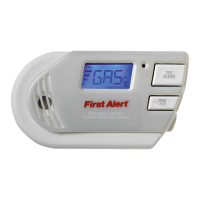
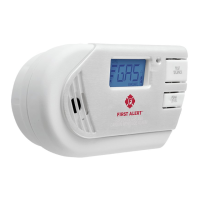
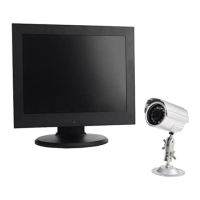

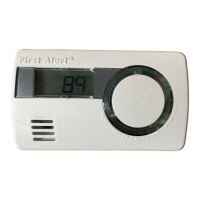




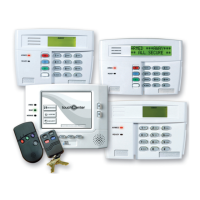
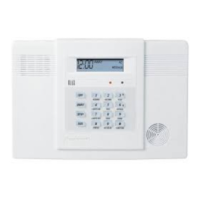
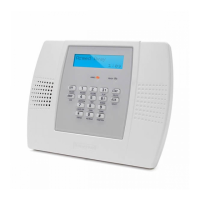
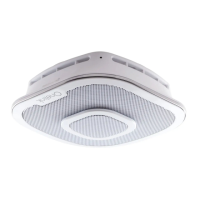
